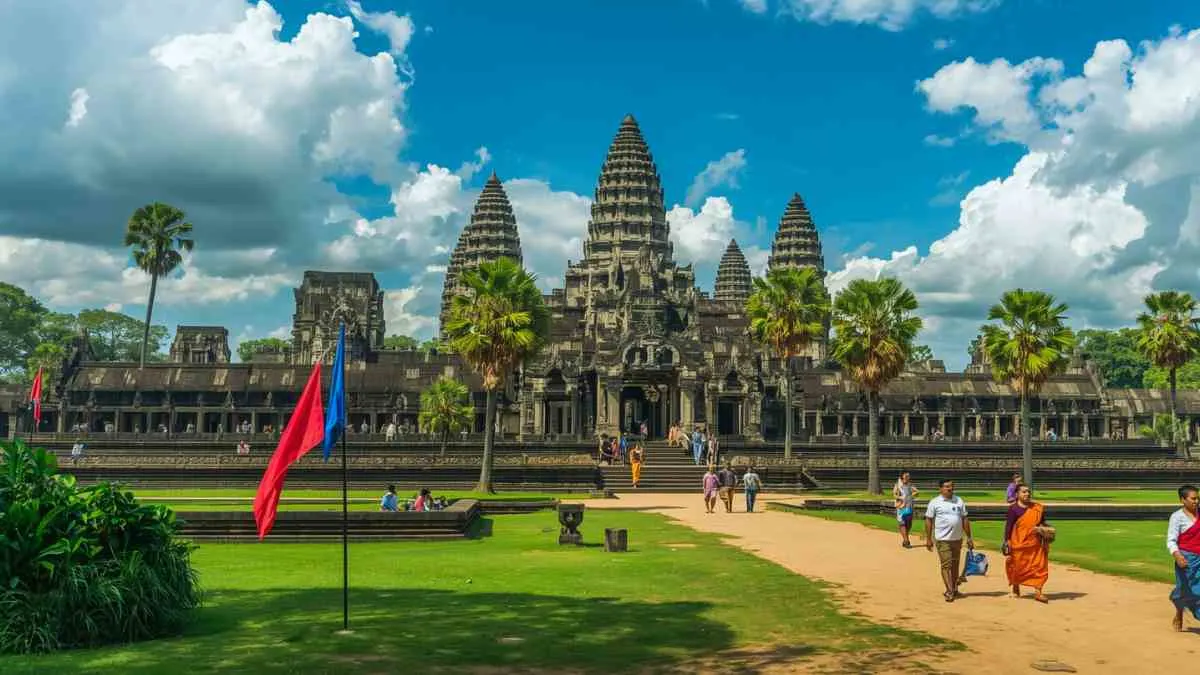When planning a trip to Cambodia, timing can make a big difference.
While Cambodia is a stunning destination year‑round, there are periods when the climate and conditions make travel much less comfortable (and sometimes more challenging).
Get a fantastic post about Worst Time To Visit Cambodia? , why it might be problematic, what you should watch out for, and whether there are exceptions.

Why Timing Matters in Cambodia?
Cambodia’s tropical climate and seasonal rhythms mean that weather and travel infrastructure vary significantly across the year. If you pick a “bad” window, you could face:
-
Torrential rainfall and flooding
-
Muddy/impassable roads, especially in rural or remote areas
-
Scorching heat and high humidity
-
Overcrowded popular destinations (making your experience less pleasant)
-
Disruptions to transport or key activities
Being aware of these factors helps you decide when to go (or when to perhaps avoid).
When Is the Worst Time to Visit?
1. Wet season: Mid‑year months
The general consensus among travel guides is that the worst time to visit Cambodia is during the wet (monsoon) season, typically from June to October. Jacada Travel+4She’s Abroad Again+4How Travel Plan+4
Key points:
-
During this period heavy rain, downpours, flooding and muddy rural roads are common. How Travel Plan+1
-
For example, one travel blog notes:
“The rainy season in Cambodia lasts from mid‑June until mid‑October, with most rainfall in September.” She’s Abroad Again
-
Another source highlights that the wet season can make travel difficult:
“The worst time to visit Cambodia is during the wet season… roads may be impassable. Humidity can be high, making it uncomfortable.” How Travel Plan
-
Rainfall peaks around August/September in many parts of the country. Selective Asia
2. Hot season / extreme heat
Another “warn‑zone” for travel is the pre‑monsoon “hot season” and late dry season months: March, April and into May. During these months, Cambodia can be intensely hot and humid, which may also reduce comfort and enjoyment. backpackingguys.com+2How Travel Plan+2
-
For example:
“Cambodia’s sweltering heat in April and May … temperatures reaching 40°C (104°F) and humidity levels soaring above 80%.” backpackingguys.com
3. Crowds & peak season drawbacks
While not “worst” in terms of weather, high tourist‑season months (November to March) bring large crowds, higher prices and busy sites — which for some travellers may reduce the enjoyment. For some budgets or types of traveller, this can also be considered a less ideal time. She’s Abroad Again+1
What Makes These Times “Worst” for Travelling:
1. Weather & ground conditions
-
Heavy frequent downpours during the monsoon make outdoor activities, temple visits, nature exploration more difficult. Roads may become slippery or blocked. How Travel Plan+1
-
High humidity and heat in the pre‑monsoon stretch can strain your body if you’re not used to it; exploring ancient temples or walking long distances becomes less fun. backpackingguys.com+1
2. Impacts on travel plans & logistics
-
Some remote areas or islands may be harder to access when floods occur. She’s Abroad Again+1
-
Transport delays, cancellations, muddy tracks may mean you’ll spend more time sitting or waiting instead of exploring.
-
Tourist infrastructure in some areas may also be scaled back during the off‑peak (wet) months, or certain activities may be unavailable.
3. Comfort & value
-
If you’re expecting sunshine, dry weather and smooth travel, visiting in heavy rain or extreme heat can be disappointing.
-
On the flip side, the “worst times” often coincide with cheaper travel deals — but you pay in terms of comfort or experience quality. She’s Abroad Again+1
Read Next: Destination Weddings | How to Protect Yourself
When Might It Be Acceptable Anyway?
Even during “worst” periods there can be reasons to still visit — depending on your travel style and priorities. For example:
-
If you are looking for off‑peak bargains, fewer tourists and don’t mind adjusting your plans around weather, the wet season might actually work. Some guides note the countryside becomes lush and green. Lonely Planet+1
-
If you stay mainly in cities (e.g., Siem Reap or Phnom Penh) and plan indoor activities, up‑to‑a‑point the weather is manageable.
-
If your trip is short, you might time it so you hit the shoulder ends of these seasons (e.g., early June or late October) rather than full monsoon or full heat.
How to Decide For You?
Before you plan, ask yourself these questions:
-
Am I comfortable with some risk of rain, muddy conditions or transport delays?
-
How much does weather/comfort matter for my experience (vs. cost savings or fewer crowds)?
-
Will I be visiting remote/rural/outdoor sites that may be more affected by weather?
-
Can I flex my itinerary if weather disrupts plans?
-
Do I have a high tolerance for heat and humidity, or prefer moderate temperatures?
If your answer is “no” or “I’d rather be safe than sorry”, then avoiding mid‑June to October (and possibly April/May) is wise.
What to Avoid & Alternatives:
1. Avoid (or approach with caution):
-
Mid‑June through October (wet season) for heavy rains and travel disruption.
-
April and May if you are not keen on extreme heat and want comfortable sightseeing.
-
Peak tourist months (e.g., December / January) if you dislike crowds and high prices.
2. Better alternative windows:
-
November to early March: drier, cooler, better for temples and outdoor sights. Jacada Travel+1
-
Shoulder seasons: late October or early June (depending on weather) may balance weather vs cost vs crowds.
Advertisements / Sponsored Content:
(You can incorporate ad‑style content here.)
Special Travel Insurance Offer
Make sure your Cambodia trip is covered — especially if you might be travelling during less stable weather. Choose a policy that covers itinerary changes, weather‑delays and outdoor activity.
Tour Operator Highlight
Looking for a local Cambodian guide who knows how to navigate the rainy season? Choose an operator with flexible scheduling, indoor options and experience handling monsoon‑era travel.
Travel Gear Tip
If you do travel during riskier months: pack a lightweight rain jacket, waterproof bags for electronics, fast‑dry clothing and check boat/road links in advance.
FAQs:
Q1: Can I still visit Cambodia during the wet season?
Yes — you can, and many travellers do. But you should expect more rain, possible disruptions and less predictability. It’s more of a “be prepared” scenario than “avoid entirely.” She’s Abroad Again+1
Q2: What about the cost benefits of visiting in the “worst time”?
Visiting in the low‑season (rainy months) often means lower prices for hotels and fewer tourists. One guide notes the cheapest time aligns with the rainy months. She’s Abroad Again+1
Q3: Are there specific months that are worst of all?
Yes — often September and October (peak rainfall) and April‑May (peak heat) are flagged as particularly uncomfortable months. Selective Asia
Q4: Does the “wet season” mean every day of rain and no outdoor activities?
No — rain tends to be intense but often short (for example late afternoon thunderstorms). Some guides emphasise that you can still travel but must be flexible. Lonely Planet
Q5: What about crowds during the dry/peak season?
Dry season months (November‑March) are the most comfortable weather‑wise but are also the busiest (and often most expensive). If you dislike crowds or high rates, you might prefer shoulder seasons. Travellers Worldwide

